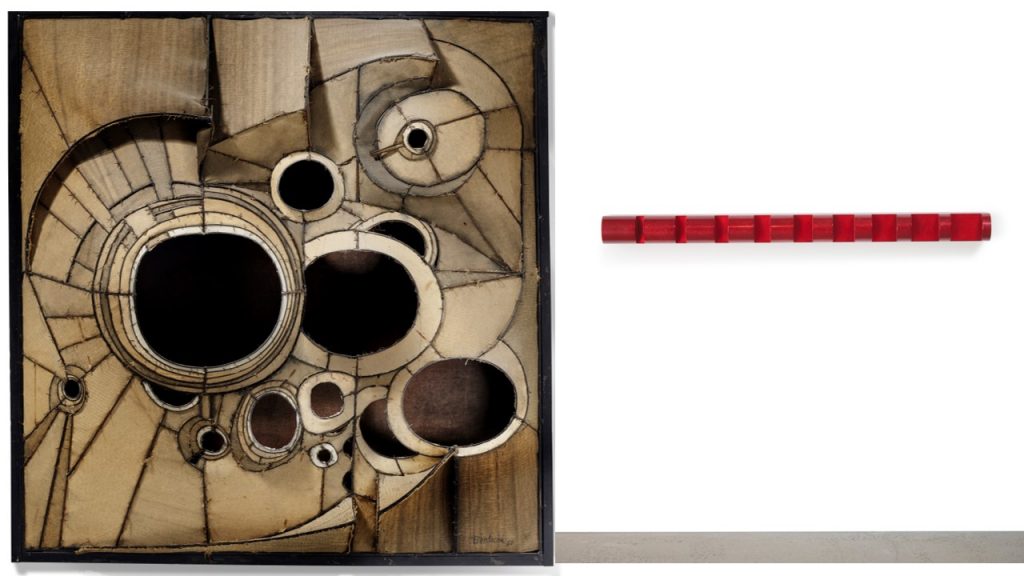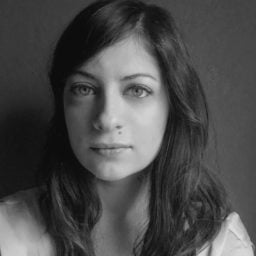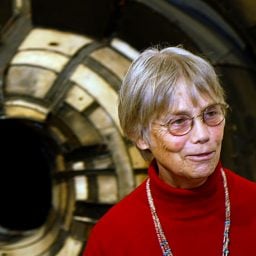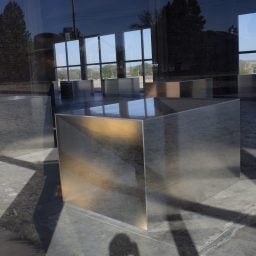Should a single Damien Hirst painting cost more than an entire Old Masters sale? Why does Adrian Ghenie’s auction record stand higher than Frida Kahlo’s? The strange, fickle, largely subjective nature of art valuation is one of the industry’s most enduring enigmas—and sources of complaint. To analyze what’s behind some of the confounding prices in the art market, in our series “This or That” we ask experts to compare two very different works of art offered at comparable prices.
In 1965, Donald Judd praised Lee Bontecou’s work in Arts Magazine, writing that his fellow sculptor’s “reliefs are an assertion of herself, of what she feels and knows… Bontecou’s work has an individuality equaled in the work of only a few artists.”
Although both artists were pioneering peers in the New York art world of the 1960s, their work could hardly be more different. Bontecou, who is now 90, made cosmic landscapes using soot and textiles; Judd’s mathematical, clean-lined sculptures made him art history’s foremost icon of Minimalism.
Both artists have two significant works in the New York auctions this month—Judd’s Untitled red iron wall piece (ca. 1968–69), priced at $2 million to $3 million at Sotheby’s, and Bontecou’s wall sculpture Untitled (1960), estimated at $2 million to $4 million at Christie’s—both of which were once shown at Leo Castelli gallery in New York.
We asked the Los Angeles-based art advisor Victoria Burns to weigh in on which work she thinks is the best buy, and why. (Since we spoke yesterday, the Bontecou work went on to triple its estimate and sell for $9.2 million.)
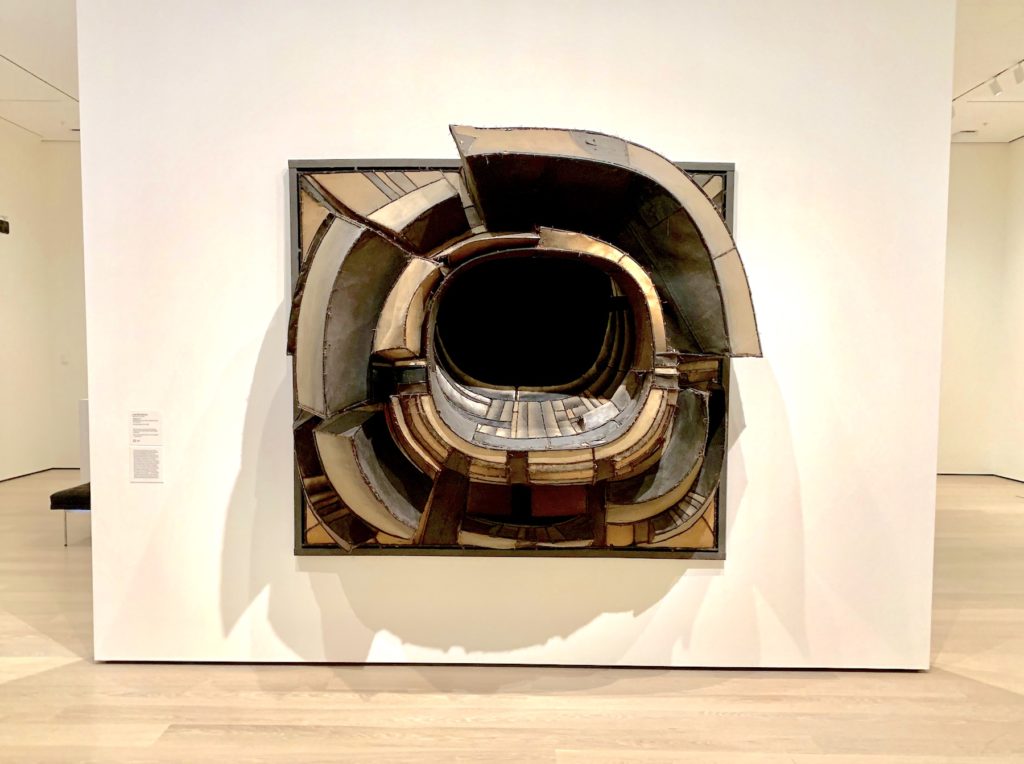
Lee Bontecou, Untitled (1961). Image: Ben Davis.
This or that: They’re both really fantastic pieces and you would not go wrong with either of them. I suffered in choosing because there seems to be a right answer: Donald Judd has been so influential in his career, his life, his foundation, Marfa—he is really a classic. But it feels like every major art collection has a Judd and I like collections that don’t just have the usual suspects. I’ve gone to art fairs all over the world for 10 years and you don’t see Lee Bontecou, whereas you do see Donald Judds all the time. So, I like the uniqueness and rarity of the Bontecou, and I’m also interested in it personally. To own the Bontecou is special, but it’s only going to go to that person who likes a deeper dive into art history.
On aesthetic considerations: The Judd has a sense of classicism that makes it very desirable. The Harley Davidson red is an incredibly beautiful example, and it was made at a pivotal point in his career. There are a lot of reasons why the Judd seems like the obvious answer to me. But I am also really drawn to the idiosyncratic nature of Lee Bontecou. It’s slightly more content rich in how it was made, scavenged from her East Village neighborhood. It’s a funny combination of industrial materials and organic sewing; the dirty detritus canvas. It’s very mysterious, looking into its black hole is like looking into the black hole in space. And it’s intriguing: Why did she make this incredibly unusual work?
For a woman at that time, it also would have been difficult to pull and stretch and weld and sew. It’s physical and handmade and might refer to things like the machine age and outer space, whereas the Judd is completely mathematically arranged and industrially painted.
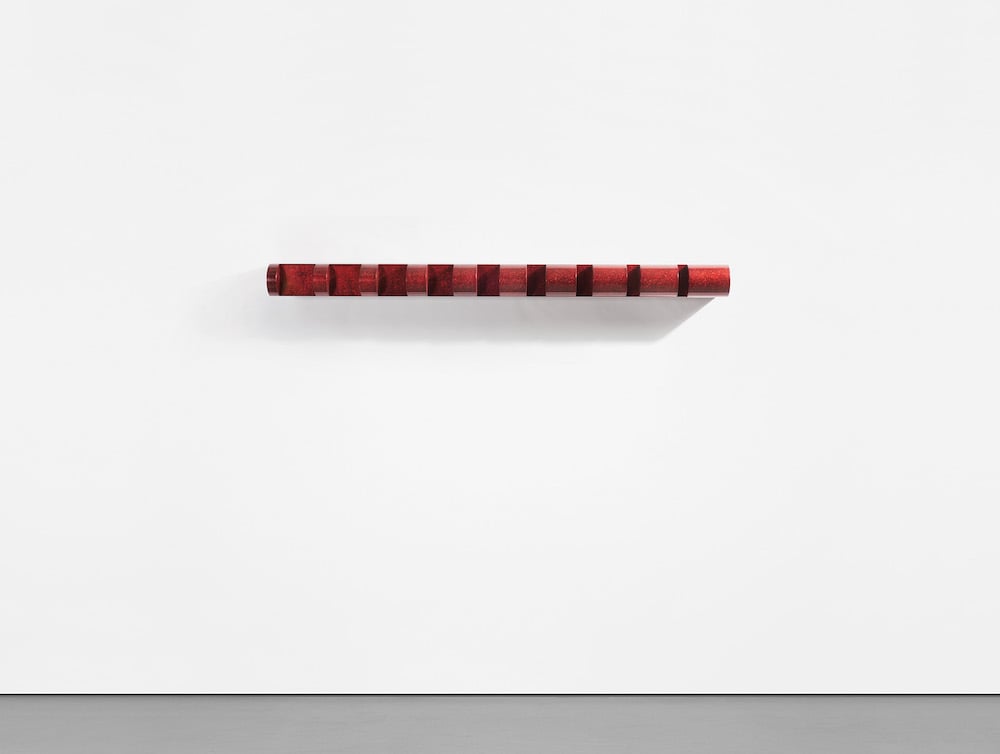
Donald Judd, Untitled (fabricated between 1965-1970). Image courtesy Phillips
On investment considerations: I think Judd is at his peak probably, more than Bontecou is. With her, there’s an upside, an expansion of her market, and an expansion of knowledge around her. I think it’s still unknown how far she can climb, but since this work so rarely comes up at auction, it’s hard to have the competition that’s happening around the world for certain artists. It’s terribly interesting that [Christie’s] price window is huge—$2 million to $4 million. They have no idea where it’s going. I can see why they’re pricing it this way, there’s more mystery around Lee’s market.
I think it’s still the time to buy women artists for sure. That’s not a sexist remark, it’s just a catching up, a re-evaluating. The question is consensus, and that’s the only thing Bontecou lacks. Everyone will tell you Judd has the market and influence. Bontecou is only for a smaller group of intellectuals who know her work and its place in art history. But look at someone like Ruth Asawa. She just exploded back into the market while being mostly invisible in the popular sense. Maybe the cognoscenti knew about her already. Donald Judd even wrote about Lee Bontecou—apparently he was one of her earliest advocates. I see her like an Eva Hesse, one of these really unusual artists.
